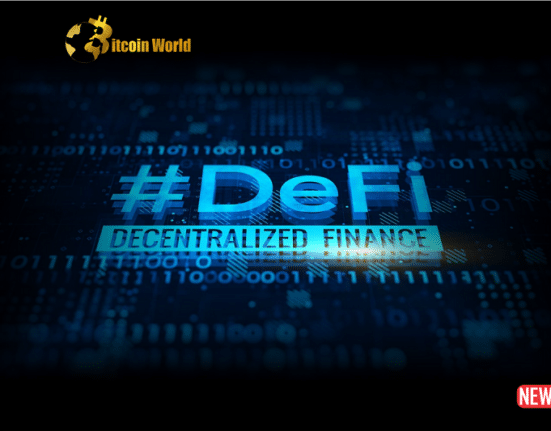Two exciting terms have surfaced in the world of technology: VR and the Metaverse. You’ve probably heard about them, but what exactly are they, and how do they differ?
Virtual Reality immerses you in digital experiences, letting you play games, learn, or travel to far-off places without leaving your room. On the other hand, the Metaverse is like a vast online universe where people can connect, work, learn, and have fun together.
But why does it matter to know the difference between them? Understanding these concepts helps us see the big picture of our digital future.
This article breaks down VR and the Metaverse, explains what sets them apart, and explores where they’re headed. So, let’s dive in and make sense of the virtual world around us.
Defining Virtual Reality (VR)
Virtual Reality, often abbreviated as VR, is a technology that creates computer-generated environments or simulations that immerse users in a three-dimensional, interactive virtual world. It does this by using a combination of specialized hardware and software.
VR aims to make users feel physically present within the digital environment. This is achieved through techniques such as stereoscopic displays (providing separate images to each eye), spatial audio (simulating 3D sound), and head tracking (adjusting the view based on the user’s head movements).
VR environments are not just for passive observation. Users can often interact with the virtual world through specialized controllers, hand gestures, or even natural movements tracked by sensors.
To enhance immersion, VR can provide sensory feedback to users. This includes haptic feedback through devices like gloves or vests, which simulate touch sensations, and motion platforms that mimic physical movement.
VR content can encompass various experiences, from gaming and simulations to virtual tourism, education, and healthcare applications. The goal is to transport users to new and engaging digital experiences.
When using VR, users typically wear a headset that covers their eyes and ears, isolating them from their immediate physical surroundings. This isolation helps in creating a more immersive experience.
Defining the Metaverse
The Metaverse is a concept that envisions a vast and interconnected digital universe where people can interact, socialize, work, learn, and engage in various activities. Unlike VR, which primarily focuses on immersive experiences, the Metaverse encompasses a broader spectrum of digital interactions.
In the Metaverse, users exist within a shared, persistent digital space transcending individual applications or experiences. This interconnectedness enables seamless transitions between different virtual environments and activities.
Its social and interactive nature is central to the Metaverse. Users can communicate with one another, collaborate, and build relationships in ways that mimic real-world interactions. This social dimension distinguishes the Metaverse from traditional online platforms.
The Metaverse goes beyond gaming and entertainment. It can potentially revolutionize various aspects of life, including remote work, education, commerce, healthcare, and entertainment. People can engage in work meetings, attend virtual classes, shop, and participate in events—all within the same digital universe.
In the Metaverse, users often can create and contribute to the environment. This can include designing virtual spaces, developing digital goods, or even scripting interactions, fostering a sense of ownership and creativity.
A virtual economy can thrive within the Metaverse with digital currencies, markets like BTC iplex, and trade. Virtual assets and goods can hold real-world value, opening up new opportunities for business and entrepreneurship.
Virtual Reality vs. Metaverse: Key Distinctions
Virtual Reality (VR) and the Metaverse are two exciting concepts in the digital realm, but they have distinct characteristics and purposes that set them apart. Understanding these key distinctions is crucial in navigating the evolving landscape of immersive technologies. Let’s explore the fundamental differences between Virtual Reality and the Metaverse:
1. Technology and Immersion
- Virtual Reality (VR): VR technology immerses users in computer-generated environments. It typically requires specialized hardware, such as VR headsets, which cover the user’s field of view and often include built-in displays, motion sensors, and tracking systems. VR is known for its ability to create a sense of presence by isolating users from the physical world and substituting it with a virtual one. This immersion can be incredibly convincing, making users feel “inside” the virtual environment.
- Metaverse: While the Metaverse can incorporate VR technology for immersive experiences, its focus extends beyond mere immersion. The Metaverse encompasses a broader digital ecosystem that includes various online platforms, applications, and experiences. These may range from 2D interfaces to fully immersive VR environments. The key difference is that the Metaverse aims to provide diverse digital interactions beyond immersion, emphasizing interconnectedness and versatility.
2. Interactivity and Socialization
- Virtual Reality (VR): VR experiences are often designed for individual or small-group interactions. For example, VR gaming typically involves solo players or a limited number of participants in a virtual environment. While multiplayer VR experiences exist, they are usually limited in scale compared to the social interactions found in the Metaverse.
- Metaverse: Socialization and interactivity are integral to the concept of the Metaverse. It fosters connections among users, allowing them to interact, communicate, and collaborate in shared digital spaces. These interactions often mirror real-world social dynamics, and the Metaverse’s social aspect can range from casual conversations to formal business meetings or educational events. In the Metaverse, users can encounter and interact with a diverse and global online community.
3. Purpose and Applications
- Virtual Reality (VR): VR is often employed for specific applications, such as gaming, simulations (e.g., flight or medical training), and entertainment experiences like immersive storytelling or virtual tourism. It excels in delivering immersive, high-fidelity experiences tailored to niche use cases.
- Metaverse: The Metaverse has a broader scope of applications. It extends to various aspects of daily life, including remote work, education, commerce, virtual events, social gatherings, and more. The Metaverse seeks to provide a versatile, interconnected digital environment supporting various activities and interactions. It aims to become an all-encompassing online universe where people live, work, and play.
4. Content and Experience Variety
- Virtual Reality (VR): VR content primarily revolves around immersive simulations and experiences. These experiences are often designed for specific audiences or industries, resulting in various niche VR applications.
- Metaverse: The Metaverse offers a wide spectrum of experiences. Users can engage in casual social interactions, participate in professional collaborations, attend educational programs, explore virtual worlds, shop in digital marketplaces, and enjoy various forms of entertainment. The diversity of experiences in the Metaverse reflects its goal of accommodating a wide range of user interests and needs.
5. Spatial Boundaries
- Virtual Reality (VR): VR experiences are typically confined within physical boundaries. Users may be limited to the size of their physical room or play area. Moreover, some VR systems require users to be tethered to a computer or gaming console, restricting their mobility.
- Metaverse: The Metaverse transcends physical boundaries. It envisions a seamless, interconnected digital world where users can move freely between experiences and locations. This includes transitioning between virtual and real-world spaces, offering users a sense of unrestricted exploration and connectivity.
Current Trends and Industry Players
Virtual Reality (VR) and the Metaverse are experiencing significant developments as technology advances and user interest grows. Here, we’ll explore the latest trends and key players in these evolving fields:
Virtual Reality (VR):
- Consumer Adoption: VR headsets have become more accessible and affordable, increasing consumer adoption. Products like the Oculus Quest series (now Meta Quest) have gained popularity, making VR gaming and entertainment more mainstream.
- Enterprise Applications: VR is making inroads into various industries. Companies are leveraging VR for training, simulations, and collaborative workspaces. For instance, medical professionals use VR for surgical training, while architects use it for 3D modeling and design reviews.
- Healthcare and Therapy: VR is being applied in healthcare for pain management, therapy, and rehabilitation. Virtual environments are used to distract patients from pain or to assist with physical therapy exercises.
- Education: VR is revolutionizing education by offering immersive learning experiences. Students can explore historical events, dive into complex scientific concepts, and visit virtual museums, enhancing engagement and understanding.
- Gaming and Entertainment: VR gaming continues to expand with a growing library of titles, including popular franchises adapted for VR. Cinematic VR experiences and virtual concerts have also gained traction.
Key Industry Players in VR
- Meta (formerly Facebook): Meta has been a driving force in the VR industry with its Oculus brand. The company’s continued investment in VR technology and content makes it a dominant player.
- Sony: Sony’s PlayStation VR has a strong presence in the gaming industry, offering a range of VR titles for PlayStation users.
- HTC: HTC’s Vive series remains popular among VR enthusiasts and professionals and is known for its high-quality hardware and tracking systems.
- Valve: Valve’s collaboration with HTC led to the HTC Vive, and the company has since released its headset, the Valve Index. Valve also operates SteamVR, a platform for VR content distribution.
- Oculus (Meta) Quest: The Oculus Quest series is known for its standalone VR headsets, offering a wireless and accessible VR experience. Its success has played a significant role in the growth of consumer VR.
The Metaverse
- Platform Development: Tech giants like Meta (formerly Facebook), Google, and Epic Games are investing heavily in building Metaverse platforms. These platforms aim to provide interconnected digital spaces for socializing, working, and entertainment.
- Virtual Economies: Virtual goods and digital currencies within the Metaverse are becoming increasingly valuable. NFTs (Non-Fungible Tokens) represent ownership of unique digital assets, and virtual real estate sales are gaining attention.
- Remote Work and Collaboration: The COVID-19 pandemic accelerated the adoption of virtual collaboration tools. The Metaverse is expected to play a significant role in the future of remote work, offering immersive meeting spaces and virtual offices.
- Digital Fashion and Identity: Users are exploring and investing in digital fashion and avatars, reflecting a growing interest in shaping online identities within the Metaverse.
- Cross-Platform Interoperability: Interoperability between Metaverse platforms is a growing trend, allowing users to move seamlessly between virtual worlds and experiences.
Key Industry Players in the Metaverse:
- Meta (formerly Facebook): Meta is at the forefront of Metaverse development, focusing on creating interconnected digital spaces and social experiences.
- Epic Games: Known for the popular game engine Unreal Engine, Epic Games is working on the Metaverse through initiatives like the Epic Games Store and Fortnite’s in-game concerts.
- Roblox: Roblox is a user-generated online gaming platform that has expanded into a virtual world where users can create and share experiences.
- Decentraland: This blockchain-based virtual world allows users to buy, sell, and develop virtual land, contributing to the growth of decentralized virtual economies.
- Microsoft: Microsoft’s Metaverse efforts include platforms like Microsoft Mesh and integration with its suite of productivity tools like Microsoft Teams.
Conclusion
In exploring Virtual Reality (VR) and the Metaverse, we’ve uncovered distinct yet complementary technologies shaping our digital future. VR has become accessible and mainstream, transforming industries like gaming, healthcare, and education with immersive experiences. The Metaverse envisions interconnected digital spaces and virtual economies, revolutionizing work, collaboration, and digital identity.
As these technologies evolve, they’ll intersect, offering us a dynamic, immersive digital future full of possibilities. Whether through VR’s depth or the Metaverse’s vastness, our digital journey unfolds, enriching our lives and connections in unprecedented ways. The future is virtual—let’s embark on it together.















